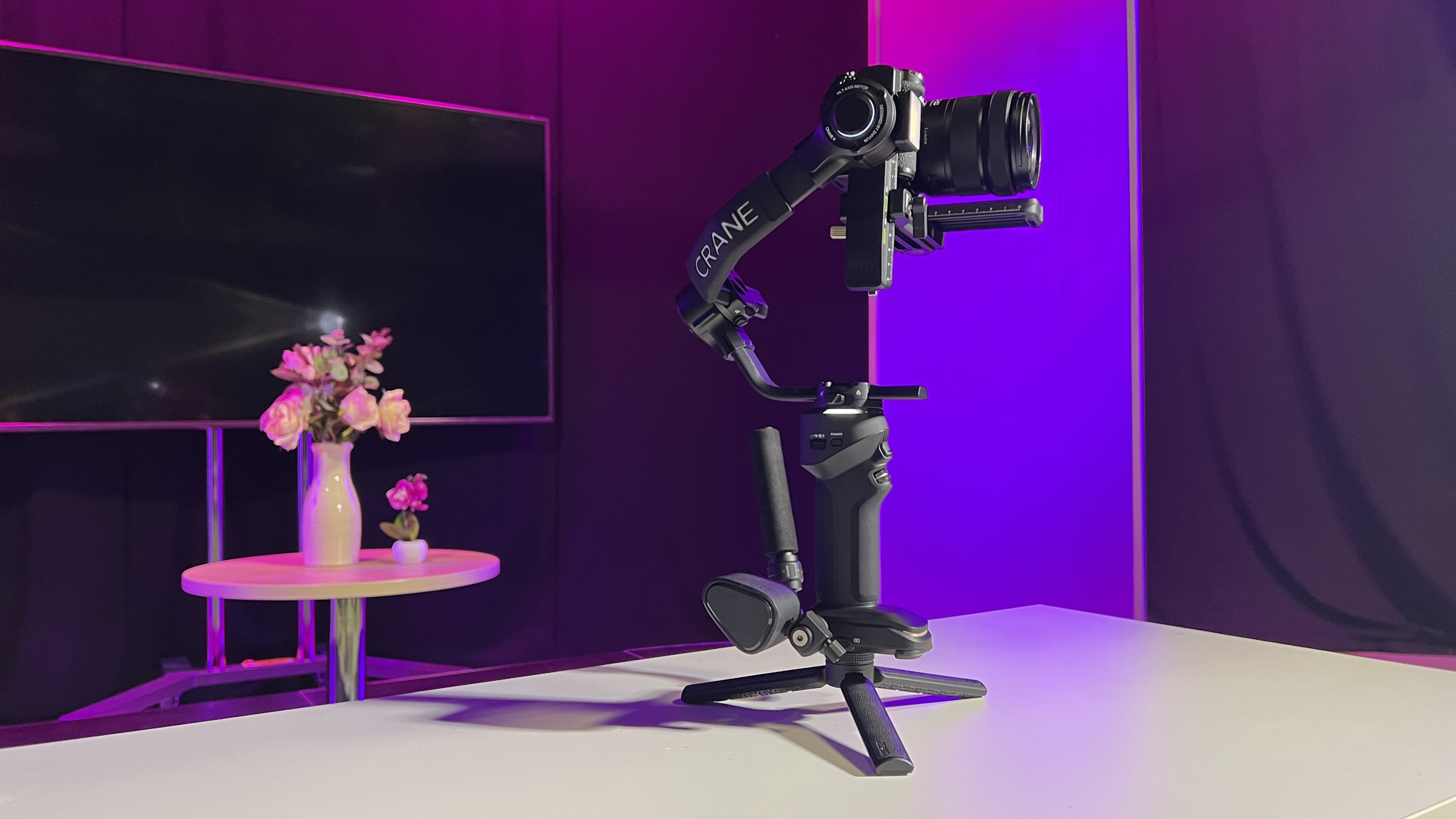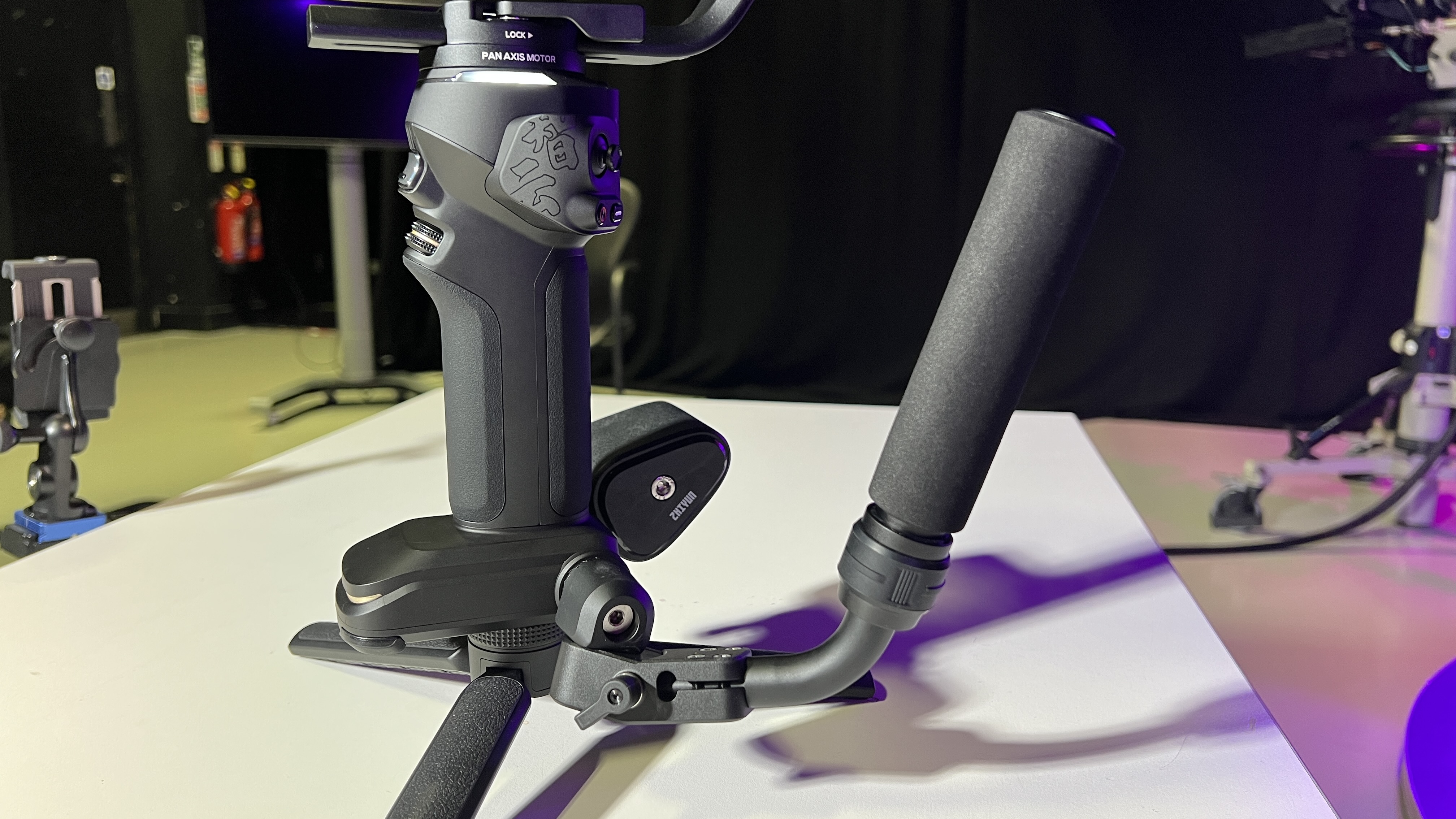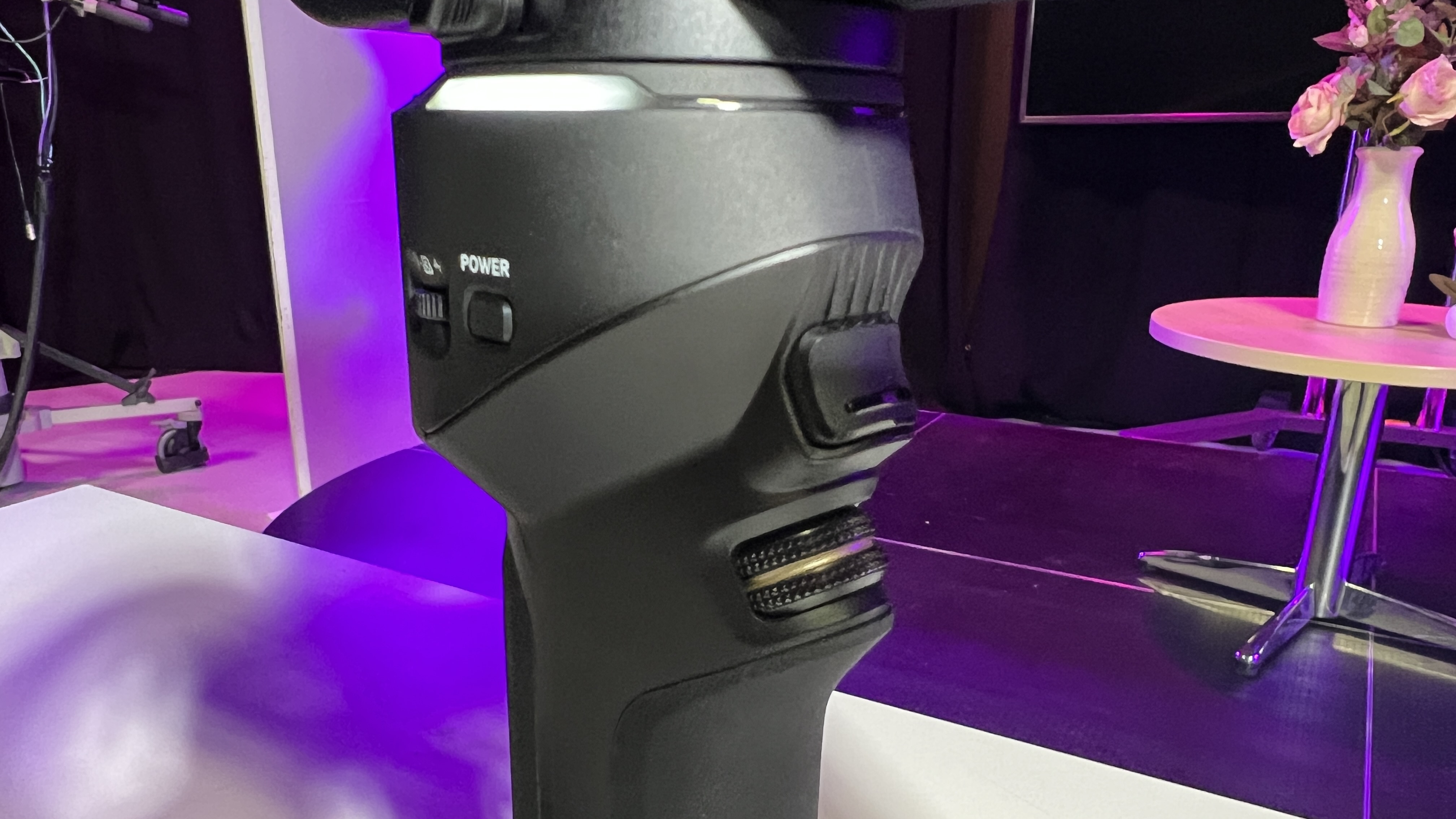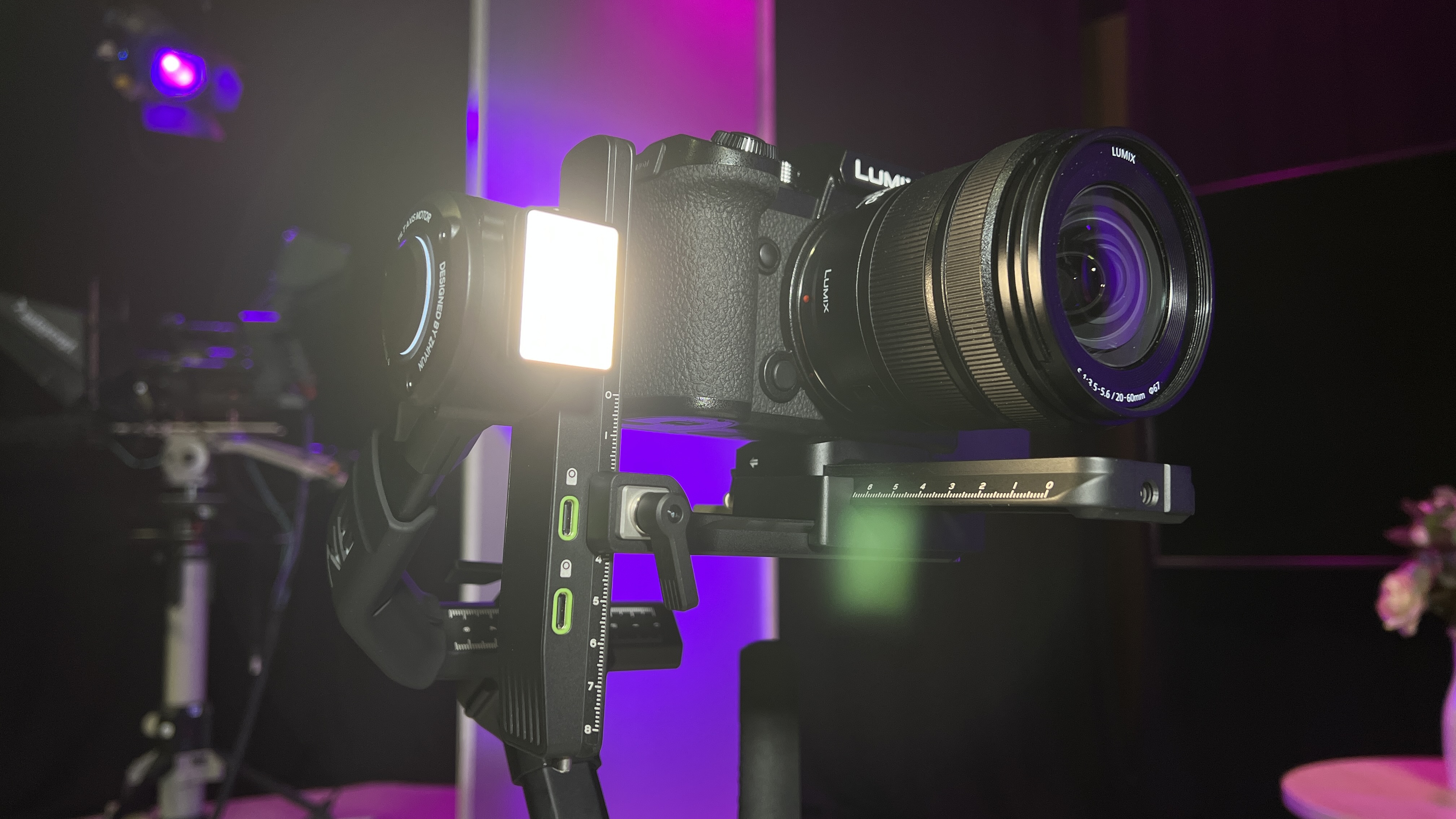
To date, I’ve tested and reviewed nine gimbals for Digital Camera World, with the Crane 4 being my tenth. They all do the same job of enabling you to track, dolly, pan, tilt and occasionally roll your camera or smartphone without the need for a cumbersome tripod or tracks.
On the gimbal spectrum, the Crane 4 fits into the heavy-lifting category, so smartphone users needn’t consider it. If you’re a smartphone filmmaker check out my ZHIYUN Crane M2S and Smooth Q4 reviews. I tested the Crane 4 with a mirrorless full-frame Lumix S5 sporting a Lumix 20-60 mm lens, though I'm confident it could handle a heavier payload. ZHIYUN doesn’t specify a specific payload weight for the Crane 4 but you can find a list of compatible cameras here.

Zhiyun Crane 4: Specifications
Weight: 1.673Kg (without mini-tripod)
Tilting range: Max: +142°, Min: -72°
Rolling range: Max: +71°, Min: -251°
Panning range: 360 °
Bluetooth: 5.0
Touch screen size: 1.22 inch
Battery Life: Up to 12 hours
LED: 3200 Lux
Zhiyun Crane 4: Key Features
All gimbals feature tilt, roll, and pan axis motors that enable you to perform a range of smooth handheld camera moves and these motors are of course present and correct on the Crane 4. However, there’s a welcome new key feature relating to these motors that I’ve not seen in the other nine gimbals that I’ve reviewed!
To make a gimbal perform smoothly you need to adjust the position of its arms so that the camera is perfectly balanced. If the camera and lens aren’t balanced then this puts strain on the motors which causes the arms to judder and invariably the gimbal will go into sleep mode to protect the motors. The Crane 4 helps you ensure that the camera is perfectly balanced thanks to warning lights on each of the three-axis motors. If a motor is happy with the balance then it displays a white light. If a motor is under strain then the light changes to red.
This enables you to quickly diagnose where the camera is out of balance so you can slide the appropriate adjustable arms until the relevant motor light displays as white. These diagnostic balancing lights reduce the ‘hit and miss’ approach of trying to work out where the balance problem lies so they should reduce the time it takes to perform the often tedious task of balancing the camera and lens.

The Crane 4 also boasts a powerful fill light (up to 3200 Lux) which could come in handy for capturing better-quality clips in low-light locations. You can trigger the light with a press of a button/dial on the pistol grip and then dial in a range of brightness levels. You can also use the dial to change the LED’s color temperature in degrees K (between 2700K - 5500K) so that the light matches the warm or cool available light in your location. The selected color temperate is displayed on the gimbal’s 1.22-inch touchscreen in degrees Kelvin.

Another welcome key feature is a small attention to detail that could also save you lots of time setting up your camera on the gimbal. For the gimbal to perform correctly you need to make sure that the camera is securely attached to the quick-release plate. Just below where the camera sits is a mini magnetic wrench that’s always at hand to let you tighten the screw that attaches the camera to the plate.
Now there’s no longer any need to rummage around in your pocket for a coin that you can use to attach the camera to the quick-release plate. The quick-release plate can be quickly removed from the tilt axis’s tripod plate and mounted vertically for portrait-oriented shooting, which is handy when shooting reels for Instagram for example.
Zhiyun Crane 4: Build & Handling
If you’ve used an older Crane model such as the Crane 3S then you won’t recognize the Crane 4 due to a complete re-design. The Crane 4 has incorporated many of the design features of ZHIYUN’s Weebill 3S.
Like the Weebill 3S the Crane 4 now has an easier-to-hold pistol grip design on the main body. The Crane 4 also boasts the Weebill’s sling grip, which you can use to make the gimbal perform dramatic close-to-the-ground tracking shots. The sling grip can be swung vertically alongside the pistol grip so that you can use it as a second grip handle for maneuvering heavy payloads in comfort.
A Weebill-like adjustable wrist rest also helps you carry the gimbal single-handed with less strain on your wrist. Both the sling arm and wrist rest can be attached via an Allen (or hex) key to suit left or right-handed operators. If you compare a Crane 4 and a Weebill 3S side by side they look very similar in size apart from the Crane 4’s considerably longer arm length which enables it to accommodate larger cameras.

While balancing the gimbal you need to lock and unlock the three-axis arms in turn. The tilt axis has a raised ridge along the edge of the motor. As I rotated the tilt axis my finger got pinched between the motor’s raised ridge and the gimbal’s LED which gave me a bit of a nip. This isn’t a major design flaw and it didn’t happen again once I became aware of the nipping hazard.

Thanks to the balance warning lights on each motor the Crane 4 is easier to balance, though like the Weevil 3S the arm’s adjustable sliders need a fair bit of pressure to push them into the optimum position. Sometimes you apply so much pressure to make a stiff slider move that it overshoots the desired balance point. What would give the Crane 4 an extra half-star is the cog wheel found on the DJI RS 3. This enables you to rotate the cog wheel to fine-tune the balance of that gimbal’s 3 axes arms with ease and precision.

Zhiyun Crane 4: Performance
Once we got our Lumix S5 with its 20-60 mm lens balanced the Crane 4 performed smoothly in all of its shooting modes, without the dreaded take-ruining vibration caused by motor strain. The combination of the sling arm and the wrist rest enabled us to tilt, pan, roll, track, and dolly with the minimum of effort as you’ll see from our supporting video.
Thanks to the smartphone ZY Play app you can mount the gimbal on its supplied mini tripod and then control it remotely. The app’s Sync Motion feature enables you to pan and tilt the gimbal by panning and tilting the smartphone courtesy of a Bluetooth link and you can fine-tune the speed of the pan, tilt, and roll axis using sliders in the app. This isn’t a unique feature to the Crane 4 but it could be very handy when you need to perform camera moves remotely (such as panning to follow a fast car that drives by close the the camera).
If your camera is paired to the gimbal via Bluetooth then you can also use the app to trigger the camera’s record button. The Crane 4 model that we tested had a damaged touchscreen so we couldn’t change shooting modes by tapping it. Fortunately, the adjacent mode button enabled us to toggle between PF (Pan Follow), Follow (F), Lock (L), and Point of view (POV). We could also access all these shooting modes with a tap on the app’s screen, so we could put the Crane 4 through its paces as you’ll see from our supporting test video.
Zhiyun Crane 4: Verdict
If you’re a DSLR or mirrorless shooter who is new to the joys of gimbal operation then the Crane 4 is well worth considering, especially as it reduces the time taken to balance the camera on the gimbal courtesy of the motor warning lights on its 3 axis. The option to control it remotely via the app will also give you extra shooting opportunities. The incorporation of a Weebill 3S-style sling grip and adjustable wrist rest makes the Crane 4 a comfortable gimbal to maneuver smoothly even with a heavy payload.

Read more: find out more about the best DSLR and mirrorless camera gimbals in our guide. You can also find out more about filmmaking with our guides to the best camera for video and the best 8K and 6K cameras.







